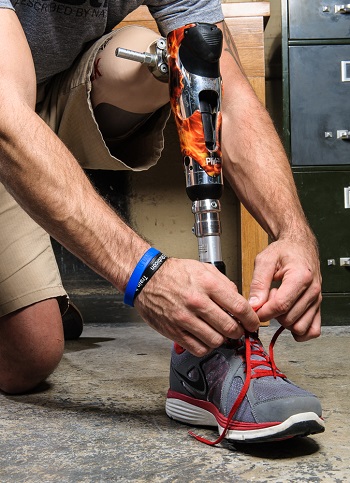3-D Printing a Better Prosthetic
In 1981, Ian Gregson popped into the prosthetics shop in a Vancouver hospital to buy a new leg. The shopkeeper took various measurements, then made a plaster cast of the amputee’s residual limb to craft an attachment. Prosthetic limbs, particularly the sockets that hold them on, must be carefully fitted to an amputee. Now, a stunt man in the film industry and a two-time competitor at the Paralympic Games, for shot put and discus throw, Gregson describes his current socket-maker as an artist, a master who passes his skills on to a few select protégés.
 Gregson’s favored quad socket has a rounded rectangular opening with a silicone liner. After a test socket confirms the fit, the real thing is cast, followed by sandpaper and a heat gun for adjustments. Gregson insists the personal touch is what really makes the difference, and there will always be something that needs tucking in or letting out. Even the way someone stands during a measurement—if his hips aren’t completely level—can throw off the fit.
Gregson’s favored quad socket has a rounded rectangular opening with a silicone liner. After a test socket confirms the fit, the real thing is cast, followed by sandpaper and a heat gun for adjustments. Gregson insists the personal touch is what really makes the difference, and there will always be something that needs tucking in or letting out. Even the way someone stands during a measurement—if his hips aren’t completely level—can throw off the fit.
Expert prosthetics makers are rare animals, however, and cannot be mass-produced, unlike technology. While an exact fit via traditional methods calls for almost virtuosic expertise, the emergence of 3-D printing may allow for much more precise appliances—ones that could be made right at home. Bespoke 3-D printouts could even disrupt orthodontics and other common correctives. The human leg has a more complex structure than any external cast can discern, and it changes with every motion and flex...
- Login to post comments